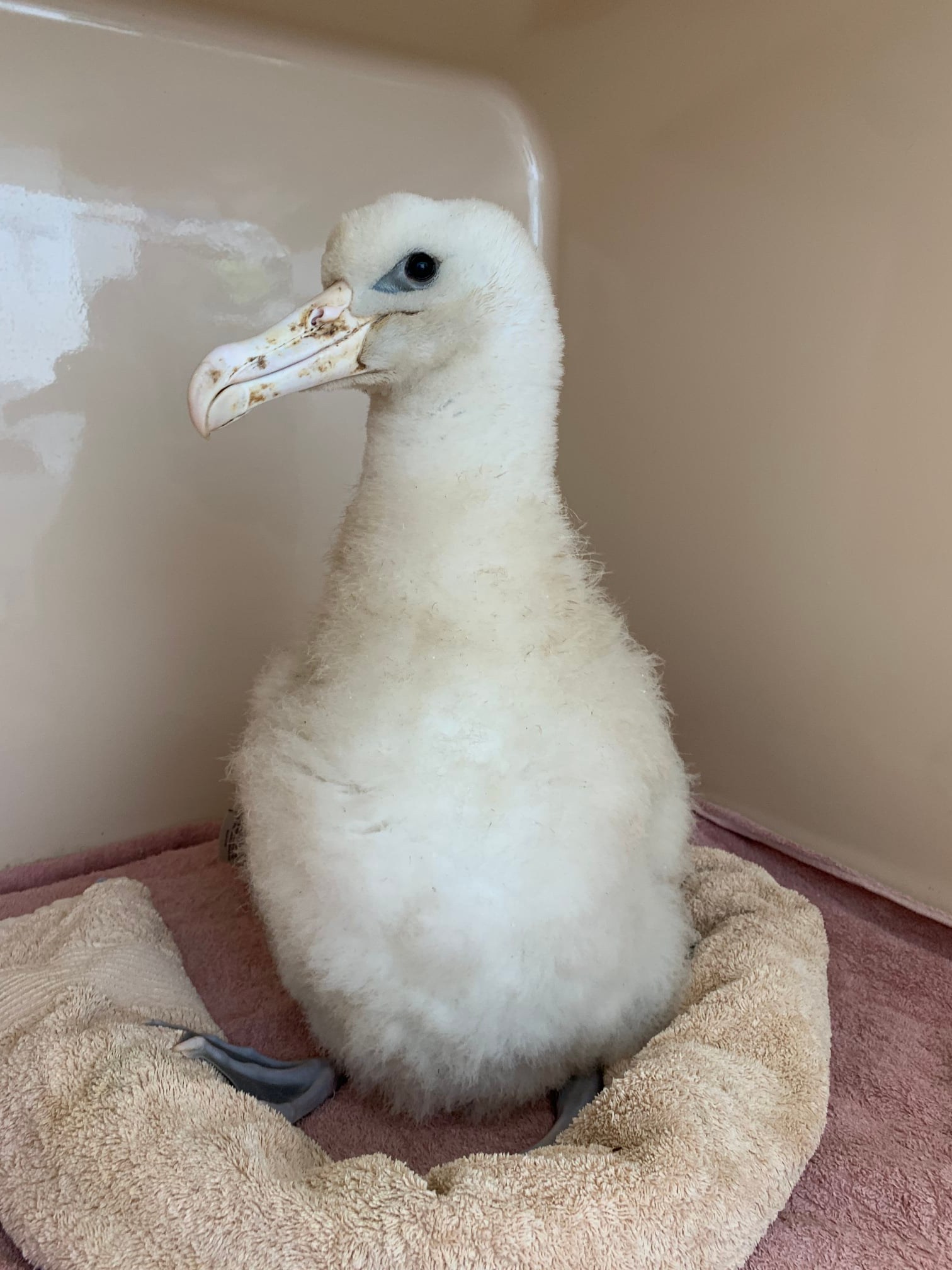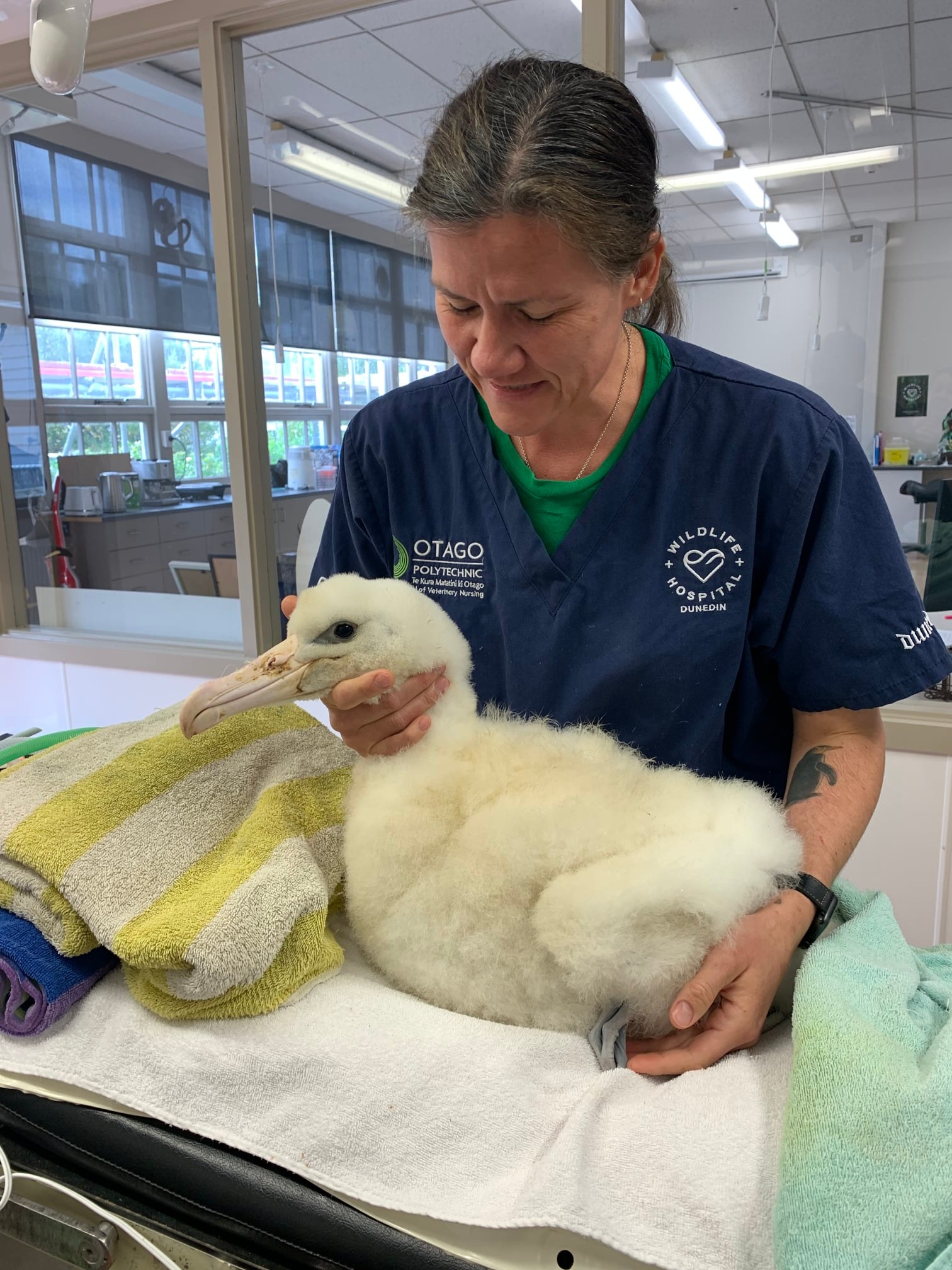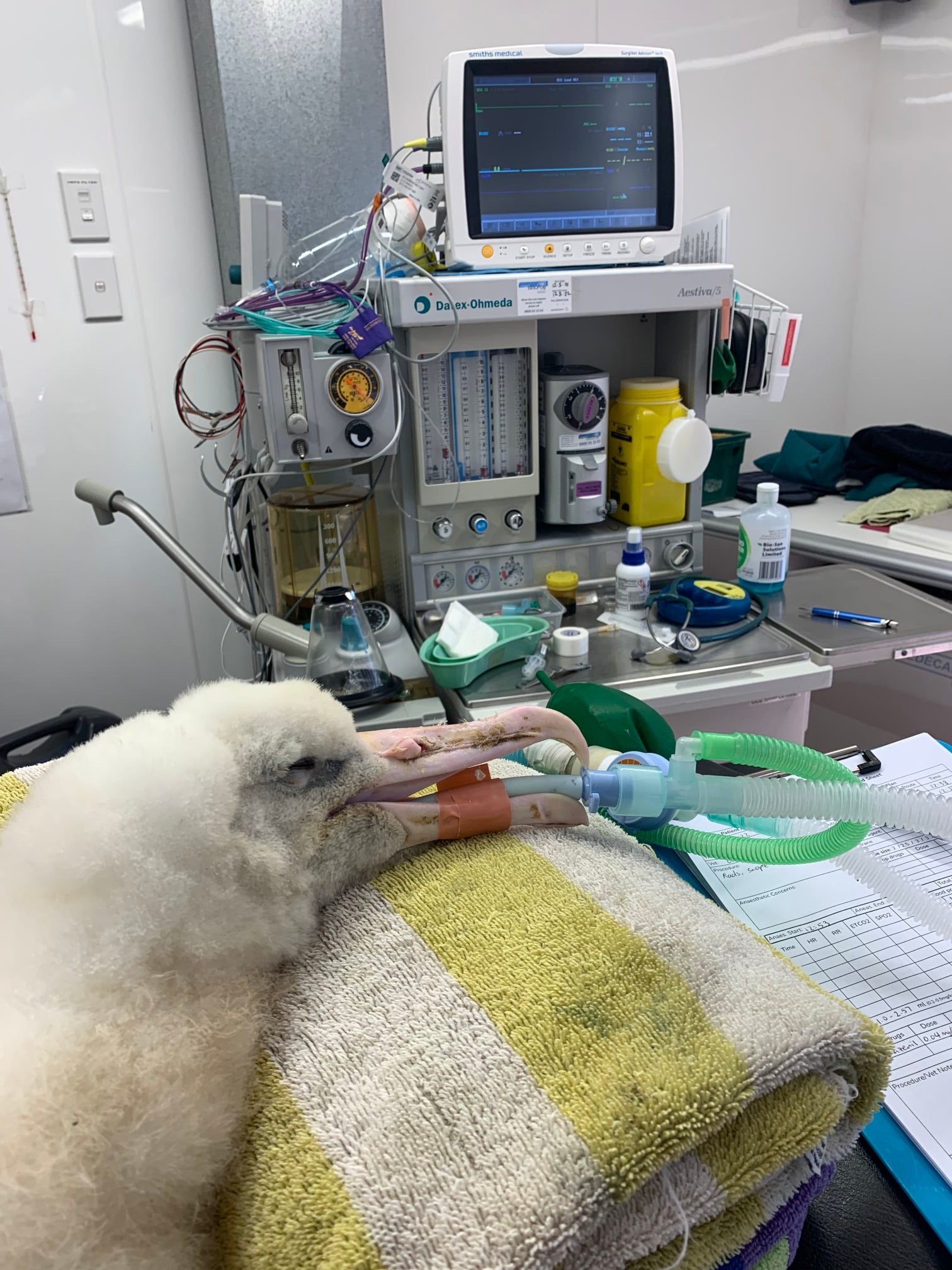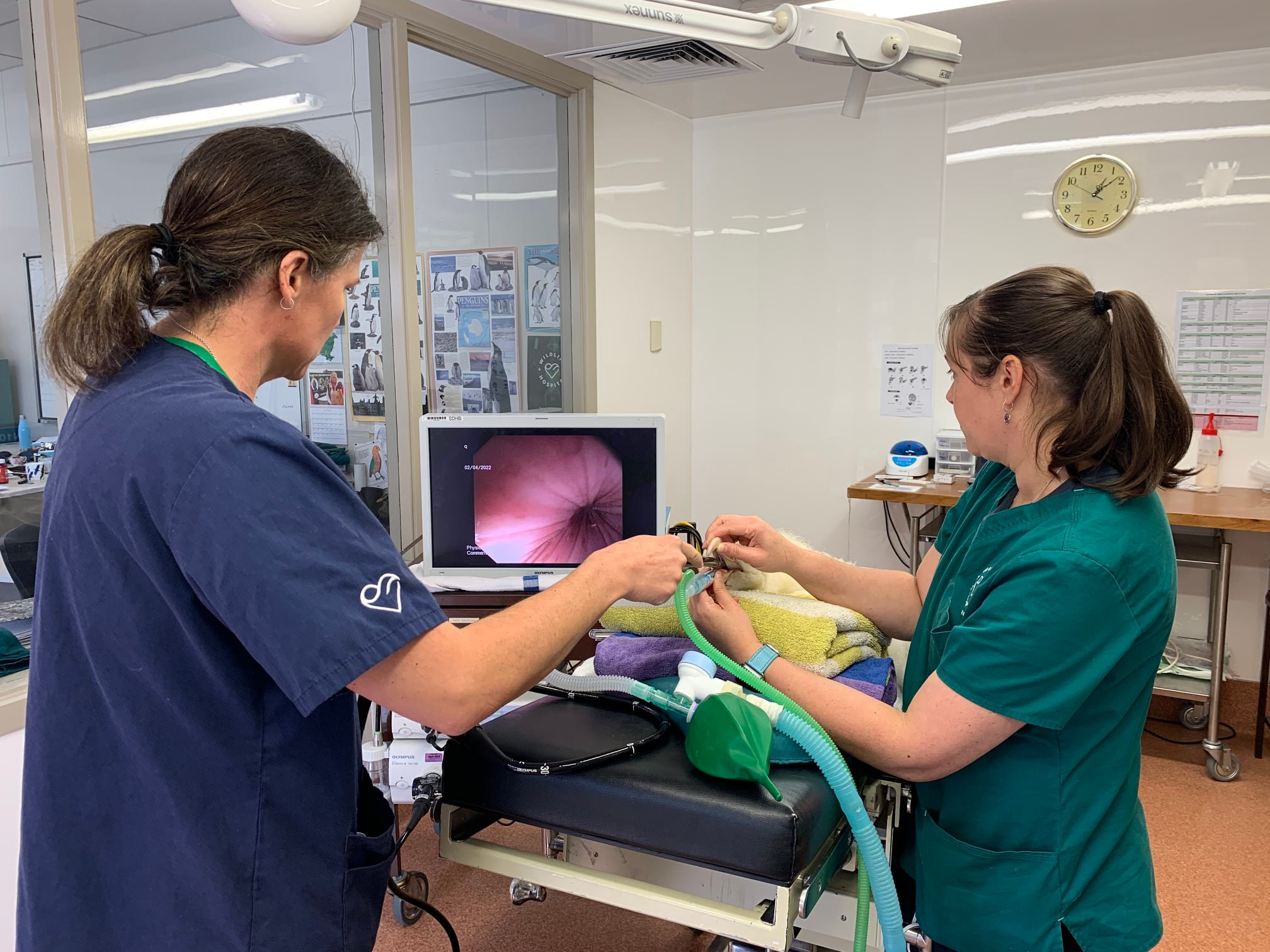
The Northern Royal Albatross chick in captivity
The Dunedin Wildlife Hospital reports via Facebook on a globally Endangered Northern Royal Albatross Diomedea sanfordi chick that appeared not to be faring well in New Zealand’s mainland colony on the Otago Peninsula. The bird was taken into temporary captivity for examination by veterinarians. After a few days it was given the all clear and returned to its nest, where it was continued to be fed by its parents in what must be the world’s most-managed albatross colony, which includes regular weighing of chicks and supplementary feeding if they are deemed to be underweight. The original post follows after minor editing.
“Our vet team recently cared for a very fluffy Royal visitor! A gorgeous young [Northern] Royal Albatross/Toroa chick from the Pukekura/Taiaroa Head colony on the Otago Peninsula in Dunedin needed a vet check. Rangers had observed vomiting that was not consistent with the typical defence mechanism oil vomit that these birds will do. The chick had also lost a significant amount of weight which led to concerns that either the chick was not receiving enough food from the parents, or, with the observed unprovoked vomiting, something more sinister could be going on.

The chick gets readied for examination
Our vets anaesthetised the chick to perform X-rays, take blood for testing as well as perform a gastroscopy to assess the stomach contents and check for unusual objects such a plastic [object]. Apart from some mild elevations in some of the blood tests, all the other tests were normal and luckily no plastic was found in the chick’s stomach, a huge relief! It was sent back to its nest and rangers supplementary fed it, to help it gain some weight, as well as administering the short course of antibiotics our vets prescribed. The latest update is that the chick’s dad has definitely been observed feeding it and the wee chick is gaining weight nicely and doing well.

Under anaesthesia
The albatross colony at Taiaroa Head is the only albatross mainland breeding colony in the world. The Pukekura/Taiaroa Head Toroa population is only 1% of the world population making each chick valuable to the sustainability of the colony so intensive management is essential including medical intervention whenever needed. The latest bird threat classification report, released in December, saw the Northern Royal Albatross’ conservation status worsen to Threatened – Nationally Vulnerable. The report says “fisheries bycatch (primarily outside of New Zealand’s waters), and droughts or storm events associated with climate change, appear to be causing the decline.” It’s a reminder that we can help by taking steps to reduce our contribution to climate change, and to dispose of plastic carefully, as once it’s in the ocean albatross can mistake it for food.”

A gastroscopy is underway
Northern Royal Albatrosses have been found to ingest plastics, including the birds of Pukekura/Tairaroa Head (click here for an example, and also follow its links for more), so the concern was a real one, although this time no foreign objects were found in the chick’s alimentary canal.
John Cooper, ACAP Information Officer, 19 April 2022

 Español
Español  English
English  Français
Français